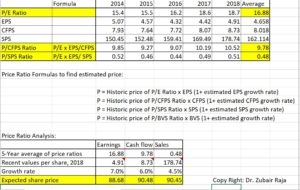In my Corporate Finance and Financial Statement Analysis Classes, group of 4 students need to analyze a company. To ensure a sound analysis, I always ask them to find out the answers to the following questions, as first assignment, so that they know the nature of firm’s business, background, capabilities, competitive advantage and its industry. This keeps them engaged right from the start and confirms that learning outcomes will be attained. Also, I open a discussion forum related to this assignment where we talk about few sample companies like Apple, Intel, Walmart, Lululemon, Costco etc. This allows my students to understand how they need to answer the questions of this assignment which are given below.
Q1: What is the business, the products, the customers, what is the recent historic economic performance, what are the recent strategic decisions taken the company?
Q2: What are the key success factors and risks associated with the firm’s chosen competitive strategy?
Q3: Does the firm currently have the resources and capabilities to deal with the key success factors and risks?
Q4: Has the firm made irreversible commitments to bridge the gap between its current capabilities and the requirements to achieve its competitive advantage?
Q5: Has the firm structure its activities (such as research and development, design, manufacturing, marketing and distribution and support activities) in a way that is consistent with its competitive strategy?
Q6: Is the company’s competitive advantage sustainable? Are there any barriers that make imitation of the firm’s strategy difficult?
Q 7: Are there any potential changes in the firm’s industry structure (such as new economic conditions, new technologies, foreign competition, changes in regulation, change in customer requirements) that might dispute the firm’s competitive advantage? Is the company flexible enough to address the change?
Students can find the answers of these questions from the quarterly (10-Q) and annual (10-K) reports submitted by the firm to security and exchange commission (SEC) which is also publicly available on SEC’s website. American firms’ statements can be accessed on www.sec.gov and Canadian firms’ financial reports are available on www.sedar.com
Now this activity provides hand on experience to my students that how publicly available information or data can be utilized to understand the company and subsequently conduct good analysis to gauge the financial health of the firm. Therefore, such activity is in line with my teaching philosophy which help students to practically engage in the course using free of cost data available to everyone.
By: Dr. Zubair Ali Raja
